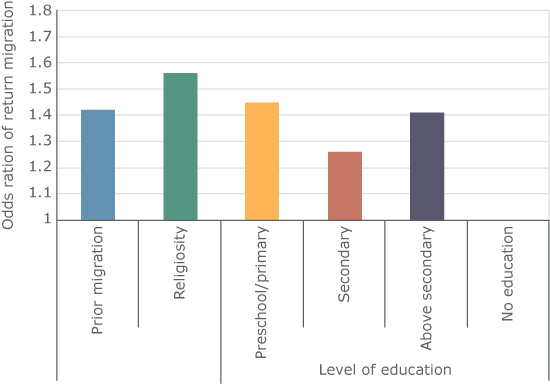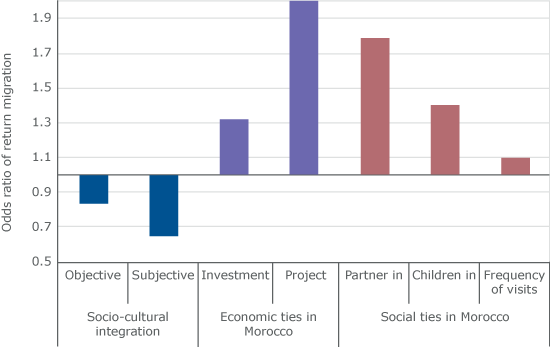Some immigrants stay in their host countries while others decide to return home, but return motives can be remarkably diverse. Migrants may decide to return if they have not been able to improve their lives through migration, a situation that can perhaps be read as a ‘failure’. Others instead may make the same decision only when they have saved and remitted enough to invest in their country of origin, making the return a measure of success.
What are the individual and contextual factors that determine return migration? What is the effect of immigrant integration on return migration? Do winners settle while losers return? Is return migration a matter of success? Hein de Haas, Tineke Fokkema, and Mohamed Fassi Fihri seek to find answers to these questions by assessing the main determinants of the return intentions of Moroccan migrants living in Belgium, France, Italy, the Netherlands, and Spain.
The findings of this study suggest that the process of return migration is rather complex, because return migration intentions and behaviours depend on livelihood opportunities, motivations to migrate, conditions in destination and origin countries, and specific features of immigrant groups. The authors conclude that economic investments and social ties in Morocco are positively related to return intentions, while these are negatively associated with social and cultural integration in host societies. Labour market participation and maintenance of ties in receiving countries do not seem to affect return intentions.
Transnational ties trigger return intentions
The study identifies three main characteristics of Moroccan immigrants in Europe that have a positive influence on their return intentions: prior migration experiences, education, and religiosity (Figure 1). For Moroccans who have moved several times during their lives the odds of intending to return are 1.4 times higher than the odds of those without prior migration experiences. This might be due to the complex nature of their migration histories. Having a preschool or primary-level education also raises return intentions odds by 45 per cent and religiosity by 56 per cent.
Hein de Haas and his colleagues demonstrate that there is a strong relationship between return intentions, integration, and transnational ties (Figure 2). The socio-cultural integration of Moroccans in Europe has a clear negative impact: Having feelings of belonging and native friends in the host country decrease the odds of intending to return by 35 and 16 per cent, respectively. Conversely, those who maintain economic and social ties to Morocco are more inclined to return. In fact, having investments in Morocco increases the odds of return by 32 per cent and having a partner living there by 79 per cent.
Finally, de Haas et al. found that Moroccans living in the Netherlands, Italy, and Spain are more likely to intend to return compared to those living in France and Belgium. They explain this result by stressing that both countries share an important linguistic link with Morocco: French.

Figure 1. Odds ratio of return migration intention among Moroccan migrants in Europe by prior migration experiences, education, and religiosity.
Note: (Reference category).

Figure 2. Odds ratio of return migration intention among Moroccan migrants in Europe by socio-cultural integration, economic, and social ties in Morocco.
Acknowledgement: Hein de Haas’s research is part of the DEMIG project and has received funding from the European Research Council under the European Community’s Seventh Framework Programme (FP7/2007-2013) / ERC Grant Agreement 240940.
This Population Digest has been published with financial support from the Progress Programme of the European Union in the framework of the project “Supporting a Partnership for Enhancing Europe’s Capacity to Tackle Demographic and Societal Change”.